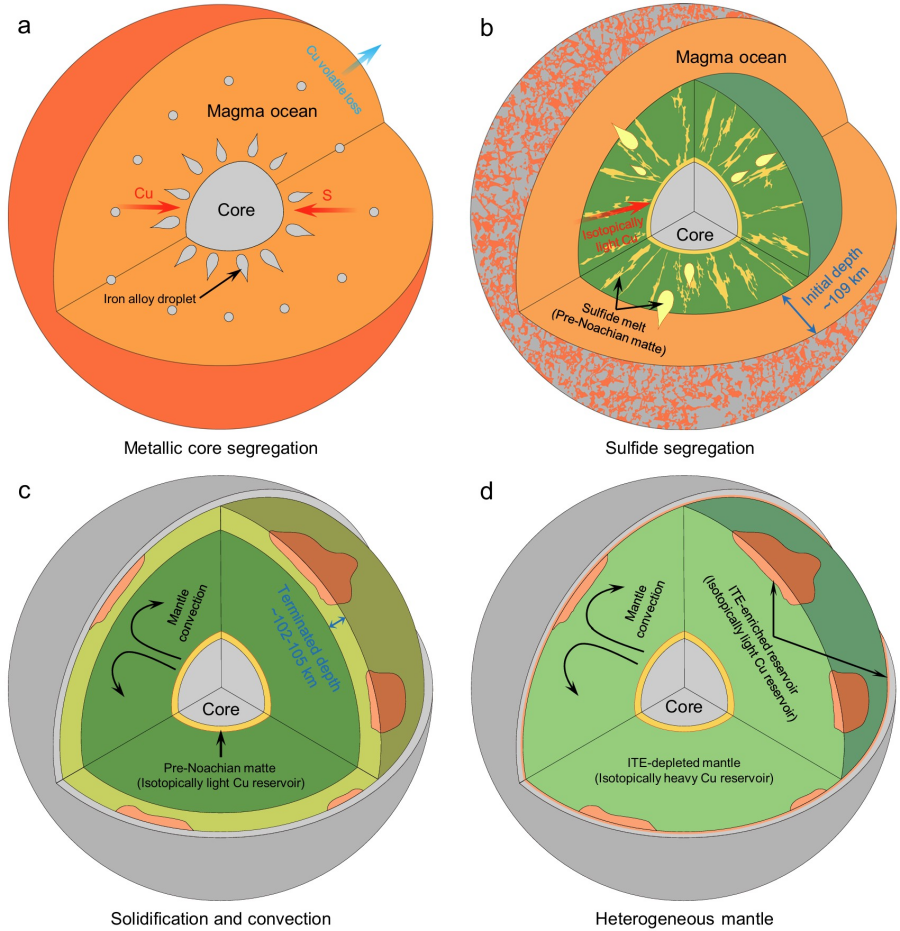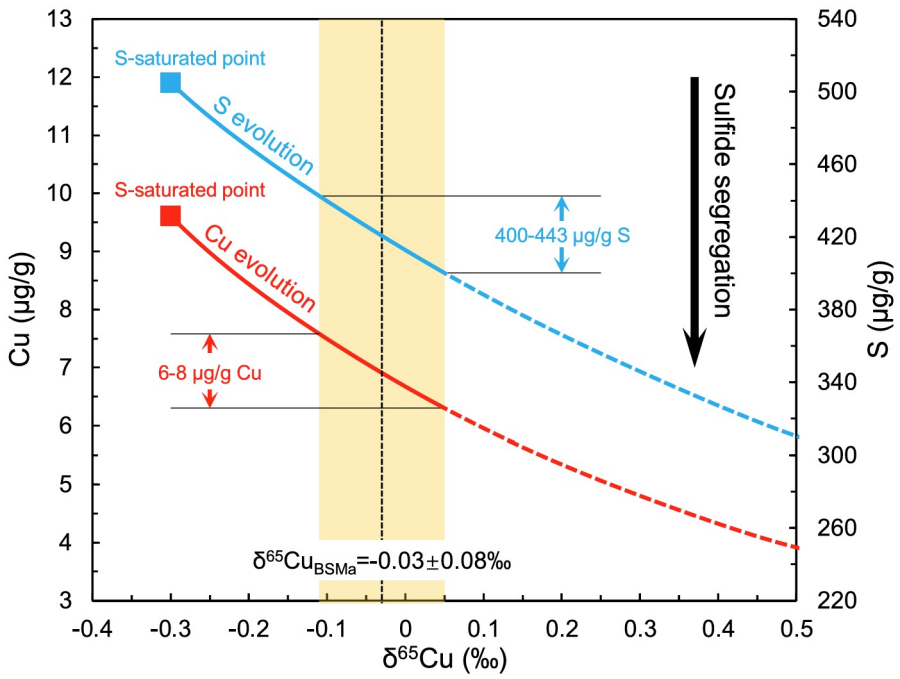Planetary differentiation is a key process that shapes the internal structure and evolutionary history of terrestrial planets. During this process, sulfide segregation in the magma ocean stage directly controls the migration and distribution of chalcophile elements, representing a crucial aspect for understanding early planetary evolution, yet its efficiency on Mars remains poorly constrained.
A research team from the Center for Lunar and Planetary Sciences, Institute of Geochemistry, Chinese Academy of Sciences, in collaboration with researchers from China University of Geosciences (Beijing), conducted whole-rock copper isotope analysis on 13 shergottite and 2 nakhlite samples. Based on major and trace element data, the team identified 8 shergottites representative of the martian mantle copper isotope composition, defining the copper isotope composition of the bulk silicate Mars as δ65Cu = -0.03 ± 0.08‰ (relative to NIST 976). This value is significantly heavier than the initial martian value estimated from chondrites (-0.30 ± 0.09‰), indicating substantial copper isotope fractionation during martian evolution.
The study constructed a two-stage core formation model. Based on martian chondritic building blocks, the model first simulated the partitioning behavior of sulfur and copper and copper isotopic fractionation during metal core segregation, using the moderately volatile element potassium to assess the impact of volatile loss on copper content and isotopic composition. Subsequently, thermodynamic software (alphaMELTS 1.9) was used to model the evolution of major elements during martian magma ocean crystallization. Combined with a parameterization model for sulfur content at sulfide saturation (SCSS), the timing of sulfide melt exsolution was determined. The results indicate that sulfide saturation occurred when the magma ocean reached ~89% crystallization, triggering the formation of sulfide melts that began migrating towards the core. However, copper isotope constraints reveal that when the residual magma ocean shallowed to depths of less than approximately 102–105 km, the associated lower temperatures inhibited the downward percolation of sulfide melts. Although sulfide melts that formed at even shallower residual melt could still migrate downward, they were unable to reach the core and instead became trapped within the Martian silicate mantle. This mechanism resulted in the silicate mantle being enriched in heavier copper isotopes, and subsequent inefficient mantle convection contributed to the formation of a heterogeneous martian mantle (Figure 1).

Figure 1. Schematic diagram of martian magma ocean evolution(Image by IGCAS)
Based on copper isotope constraints, this study estimates an upper limit for the martian mantle sulfur abundance of 400–443 μg/g, with a corresponding copper abundance of 6–8 μg/g (Figure 2). This sulfur-poor character is consistent with the sulfur-undersaturated evolution history commonly observed in martian igneous rocks.

Figure 2. Covariation between Cu-S depletion and δ65Cu in residual melts (values converted to bulk silicate Mars averages)(Image by IGCAS)
This study is the first to apply the copper isotope system to investigate martian core-mantle differentiation, revealing that sulfide segregation is the key mechanism controlling the behavior of chalcophile elements during early martian history. It provides a new perspective for understanding the formation and differentiation of terrestrial planets.
Contact:
XU Yingkui
Institute of Geochemistry, Chinese Academy of Sciences
Email:xuyingkui@vip.gyig.ac.cn
(By Pro. XU Yingkui’s team)